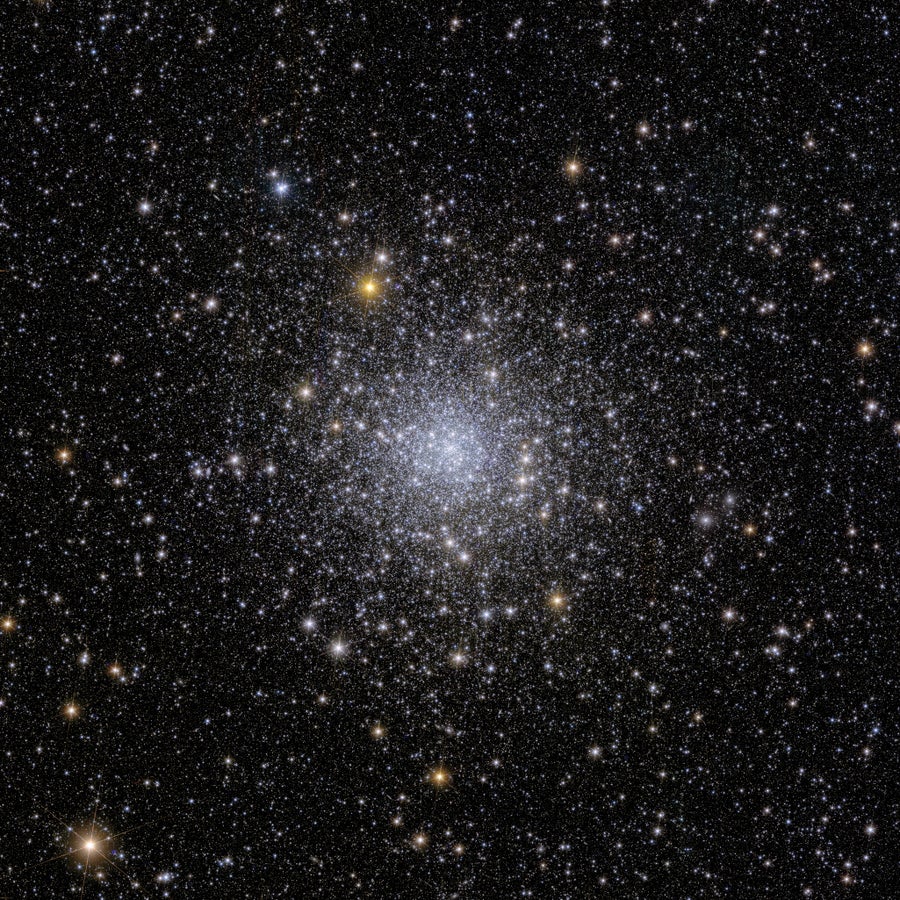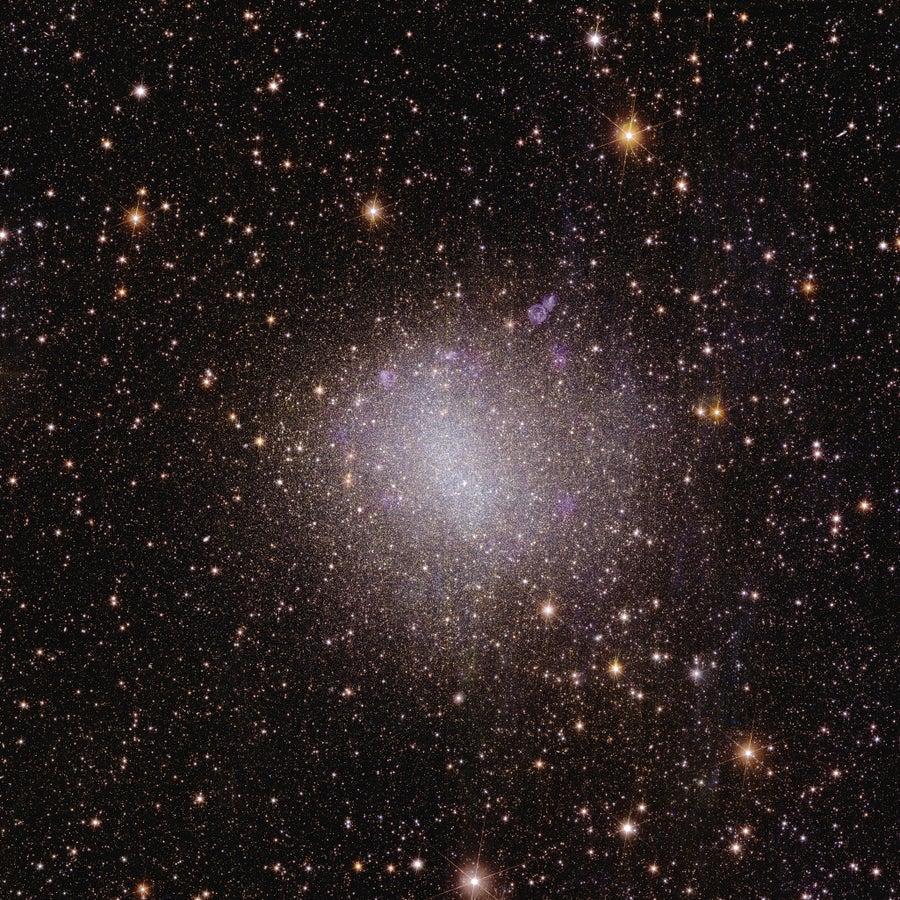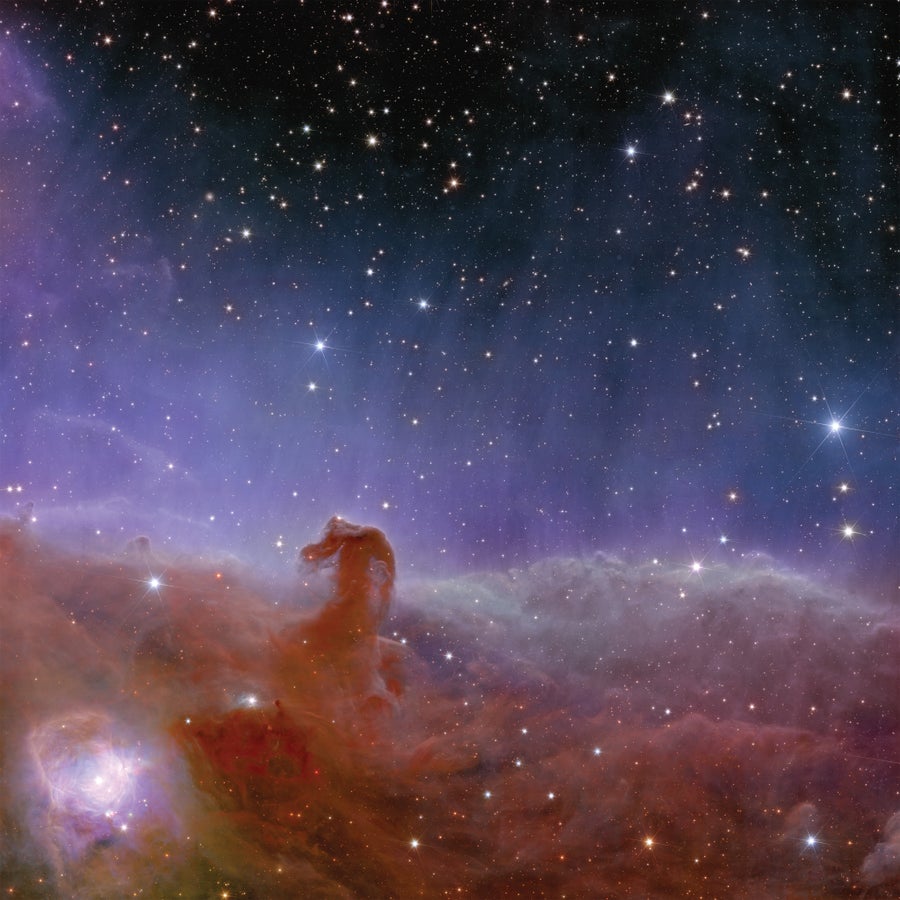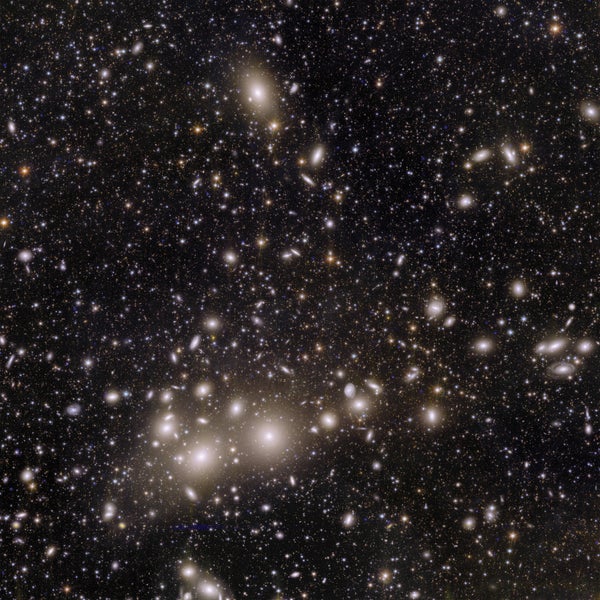The first full-color science images from the Euclid space telescope showcase crystal-clear views of hundreds of thousands of galaxies, star clusters and other stunning cosmic objects.
The images are just a taste of what researchers hope the space telescope, which is stationed 1.5 million kilometers from Earth, will provide over its planned six-year primary mission. This European Space Agency (ESA) project is designed to study the universe’s large-scale structure to help solve the mysteries of dark matter and dark energy. The release of the images marked the end of the calibration-and-testing part of the mission and the move into day-to-day science observations, said Carole Mundell, director of ESA’s science program, in a November 2023 webcast that revealed the images. “Today is an iconic day,” Mundell said.
Cosmologists know that the well-understood parts of the universe—stars and other visible matter, as well as electromagnetic radiation and other familiar forms of energy—make up only about 5 percent of what’s really out there. The rest is dark matter and dark energy. The former is a substance that is all but invisible, save for its gravitational pull, and the latter is a mysterious force that powers the accelerating expansion of the universe. Dark matter and dark energy alike subtly influence the shapes and arrangements of galaxies and galaxy clusters, which collectively form filaments, sheets and voids in a vast “cosmic web.”
On supporting science journalism
If you're enjoying this article, consider supporting our award-winning journalism by subscribing. By purchasing a subscription you are helping to ensure the future of impactful stories about the discoveries and ideas shaping our world today.
Euclid launched in July 2023 to probe the fine details of this sprawling structure with a state-of-the-art 600-megapixel visible-light camera and a wide-field near-infrared spectrometer and photometer. The first images focus on what’s visible: spiral galaxies, elliptical swirls of stars and dandelion-puff-like clusters of stars pulled together by gravity.
“It’s the start of the adventure,” says Adam Riess, an astrophysicist at Johns Hopkins University, who is not involved in the Euclid mission but led the team that discovered the accelerating expansion rate of the universe and shared the 2011 Nobel Prize in Physics for that work.
The extraordinary sharpness and breadth of these images are a testament to the Euclid telescope’s ability to survey large swatches of the sky with incredible clarity. Many of them offer sprawling views of well-studied regions that other telescopes could replicate only via stitched-together composites of many time-consuming observations. Euclid, in contrast, can capture such large-scale snapshots in under an hour. There are more than 100,000 galaxies in the telescope’s first snapshot of the Perseus cluster, including extremely faint ones that were never seen before.

Euclid’s view of the globular cluster NGC 6397 reveals not only the cluster’s hundreds of thousands of stars but also thousands of background galaxies.
ESA/Euclid/Euclid Consortium/NASA;J.-C. Cuillandre/CEA Paris-Saclay/G. Anselmi (CC BY-SA 3.0 IGO)
Euclid’s view of the nearby spiral galaxy IC 342 highlights the telescope’s piercing gaze. This galaxy is usually hidden behind the Milky Way’s dust-and-gas-clogged central plane. Euclid’s near-infrared camera, however, can detect some of the heat coming off this neighboring galaxy that passes unscathed through this obscuring material. Researchers then use false color to translate these otherwise invisible wavelengths into a visible image.

Purple regions of intense star formation dot a Euclid image of the irregular galaxy NGC 6822.
ESA/Euclid/Euclid Consortium/NASA;J.-C. Cuillandre/CEA Paris-Saclay/G. Anselmi (CC BY-SA 3.0 IGO)
“We study the rotation of galaxies like this to actually infer how much dark matter we have in our universe,” said Guadalupe Cañas Herrera, a space science research fellow at ESA, in the November webcast.

Euclid captured a view of the nearby spiral galaxy IC 342.
ESA/Euclid/Euclid Consortium/NASA;J.-C. Cuillandre/CEA Paris-Saclay/G. Anselmi (CC BY-SA 3.0 IGO)
The goal of the Euclid mission is to create the most extensive three-dimensional map of the cosmos we have ever known. To make it, the telescope’s survey will stretch across one third of the sky and out to a distance of 10 billion light-years. Given the universe’s 13.8-billion-year age and light’s finite speed, that means Euclid will probe the cosmic web’s evolution from a time close to when the first stars were forming. “You’re able to go explore a part of the universe that, up until this point, we have very little data about,” says Tanveer Karim, a fellow in observational cosmology at the University of Toronto, who is not involved in the mission.
In one of the images, the irregular galaxy NGC 6822 shimmers like a haze, and its star-forming regions appear as (false-color) puffs of purple. The purple hue emerges from the galaxy’s mixture of ionized gas, which appears blue, and dust, which appears red. Another image spotlights the Horsehead nebula, a star-forming region in the “belt” of the constellation Orion. With Euclid’s eagle-eyed precision, researchers hope to find brown dwarfs hidden within the nebula, said Jason Rhodes, an observational cosmologist at nasa’s Jet Propulsion Laboratory, during the webcast. Brown dwarfs are luminous objects that are too small to become stars but too big to be considered planets. Learning more about how they form could help scientists better understand the vagaries of stellar and planetary birth alike.
The telescope’s high-precision observations will allow for unprecedented measurements of weak gravitational lensing—the subtle warping of light from background galaxies and clusters that is caused by the gravitational fields of intervening massive objects. Researchers can use these weak distortions to map dark matter’s distribution. The telescope will also be used to study baryonic acoustic oscillations (BAOs). These are wavelike ripples in the density of matter that froze out from the fiery plasma filling the universe in the first 300,000 years or so after the big bang, and they’re thought to have influenced where galaxies subsequently formed. Mapping the distribution of far-off galaxies will help reveal the presence and patterning of these ripples—two currently murky types of measurements that can help cosmologists pin down the universe’s exact expansion rate.
Euclid’s use of BAOs and weak gravitational lensing for its grandest measurements is a bit like looking at an object at the bottom of a swimming pool, said Henk Hoekstra, an observational cosmologist at Leiden University in the Netherlands, during a press conference that followed the images’ release. The pool water in this metaphor is the invisible dark matter and dark energy distorting the visible object. You may not be able to observe the water directly, but by studying the distortions of the object, you can infer information about the water’s depth and currents.
“If we measure the shapes of these galaxies and average this together, we would see how these galaxies, thousands of them, are showing preferred orientations,” Hoekstra said.
The astonishing depth of Euclid’s view is apparent in its picture of NGC 6397, the second-closest globular cluster to Earth. Thousands of pinpricks of light—most of them nameless, far-flung galaxies—lurk in the background. “We have this enormous field of view,” said Reiko Nakajima, an astronomer at the Argelander Institute for Astronomy at the University of Bonn in Germany, at the press conference.

The stellar nursery of the Horsehead nebula, as seen by Euclid.
ESA/Euclid/Euclid Consortium/NASA; J.-C. Cuillandre/CEA Paris-Saclay/G. Anselmi (CC BY-SA 3.0 IGO)
Currently, Johns Hopkins’s Riess says, there are two competing general explanations for the dark energy that is pushing the expansion rate of the universe ever faster. One is that dark energy is a cosmological constant, an unchanging property of space, which would mean that the universe will continue to expand indefinitely, sweeping far-off objects forever beyond our local point of view. Another is that dark energy isn’t the cosmological constant, meaning it might radically change over time. This could lead to two extreme—and extremely divergent—outcomes: the “big crunch,” in which dark energy would become an attractive force and cause the universe to collapse, and the “big rip,” wherein dark energy would strengthen to tear apart matter and sunder spacetime itself. A third catchall explanation exists, Riess adds: our present theories of gravity could be entirely wrong, in which case all predictive bets would be off.
“We don’t know what the answer will be,” he says. “That’s why there’s a lot of excitement around these approaches.”
Euclid isn’t the only project that is panoramically probing these questions. China’s Xuntian space telescope, scheduled to launch in 2025, is designed to map distant galaxies across 40 percent of the sky at a resolution similar to that of the Hubble Space Telescope, according to the state-run news agency Xinhua. The ground-based Dark Energy Spectroscopic Instrument (DESI) at the Kitt Peak National Observatory in Arizona is also probing the sky for BAOs. And nasa’s Nancy Grace Roman Space Telescope, expected to launch in 2027, will also bring Hubble-like resolution to its own expansive survey of cosmic structure as it looks toward the center of the Milky Way for signs of weak gravitational lensing and more.
“We are actually entering an era where the same patch of sky is being observed by multiple telescopes,” the University of Toronto’s Karim says. You can “bring in advantages from different surveys in a way that complements each one’s weaknesses. You can build a more comprehensive picture.”
